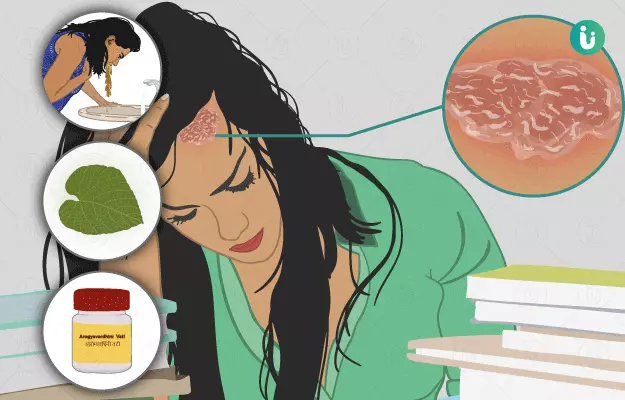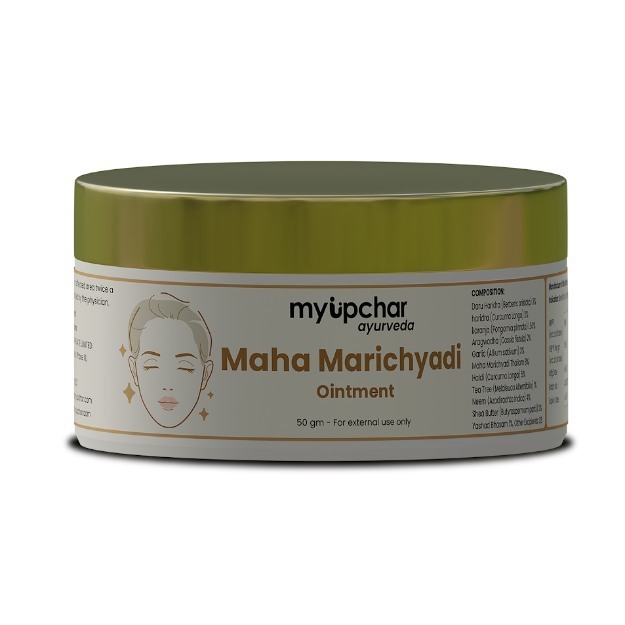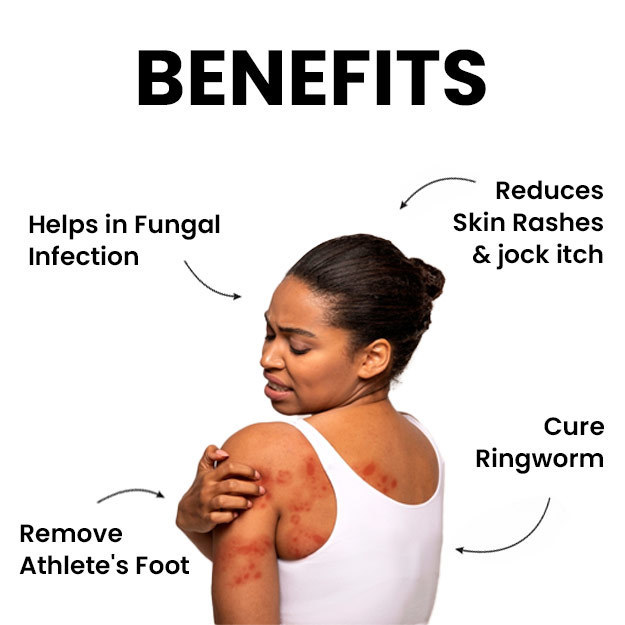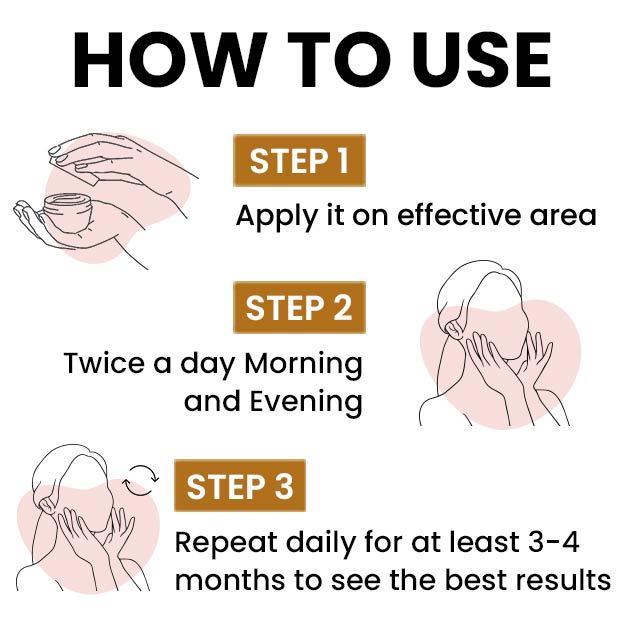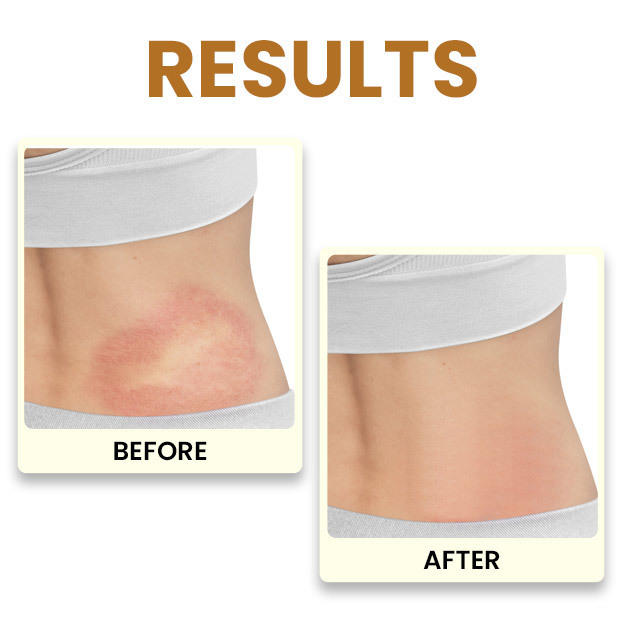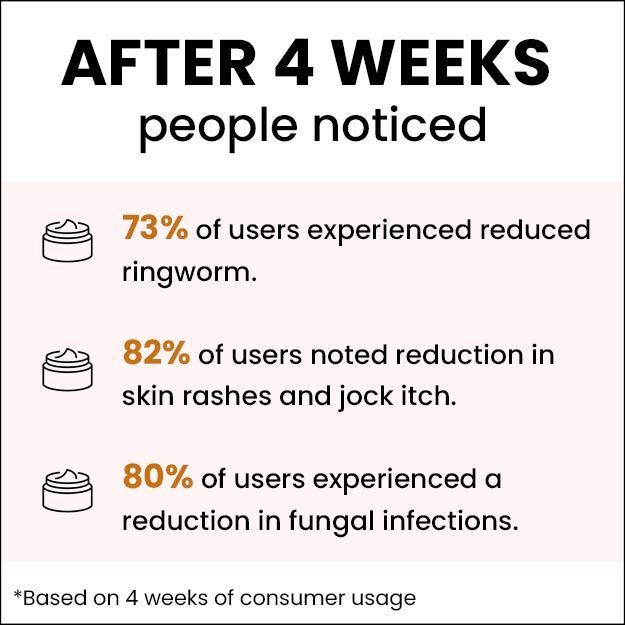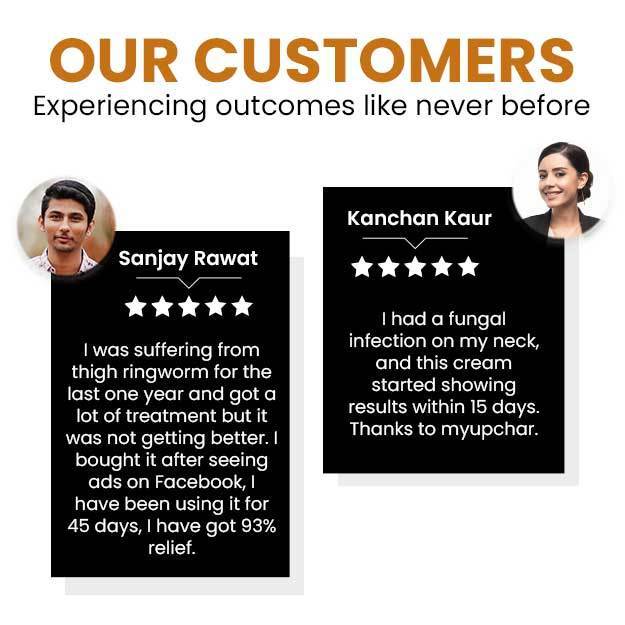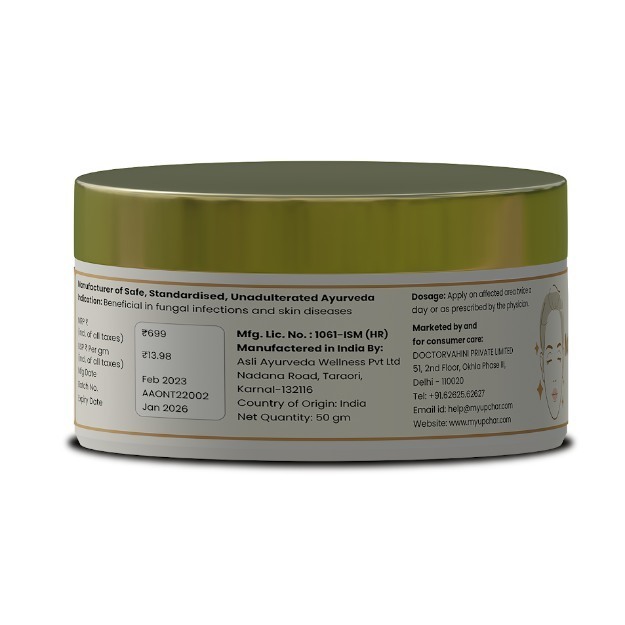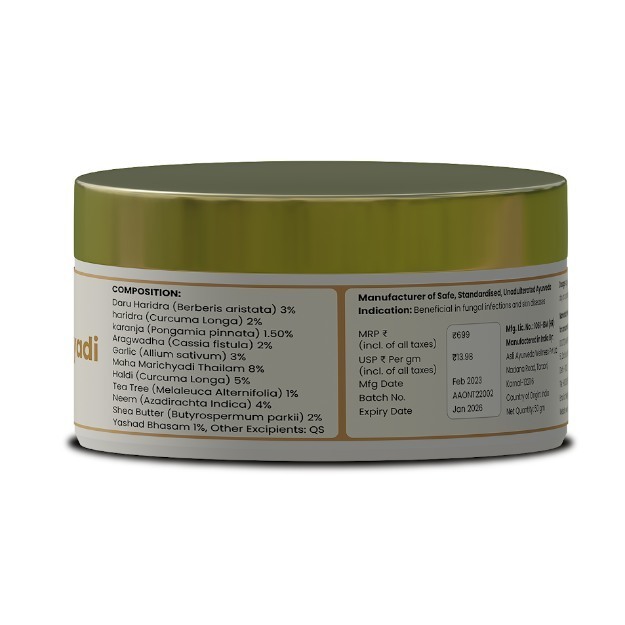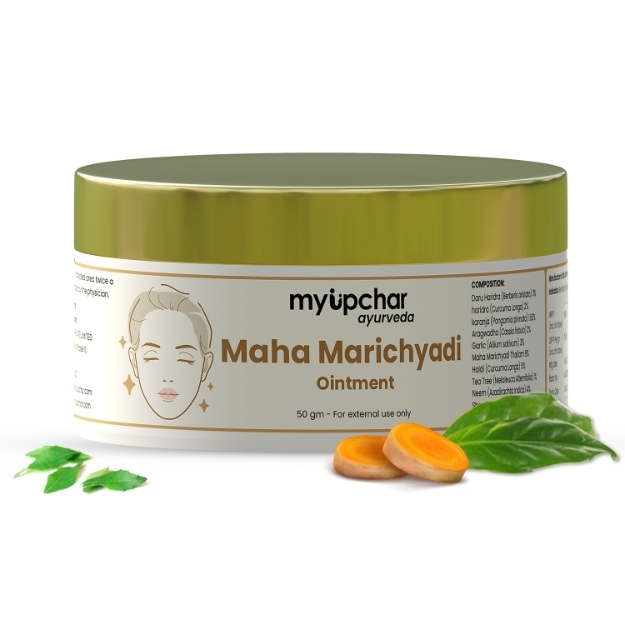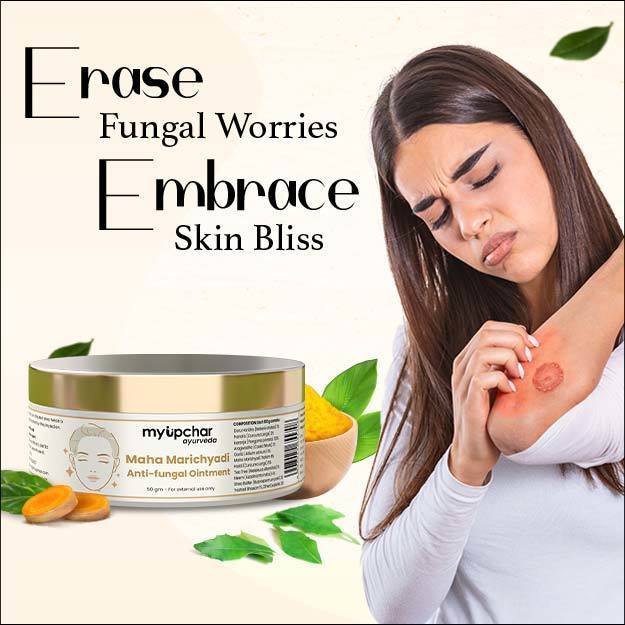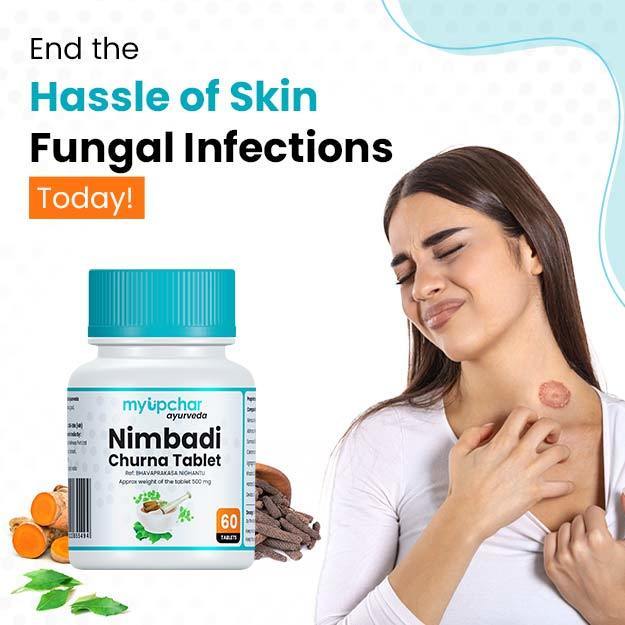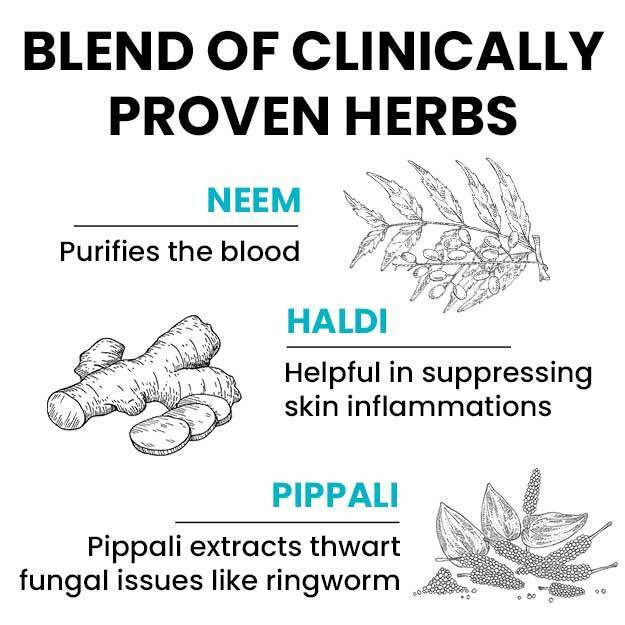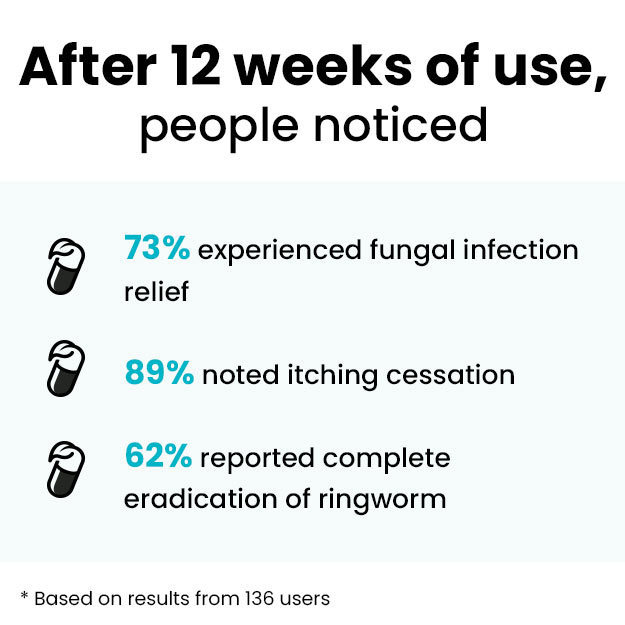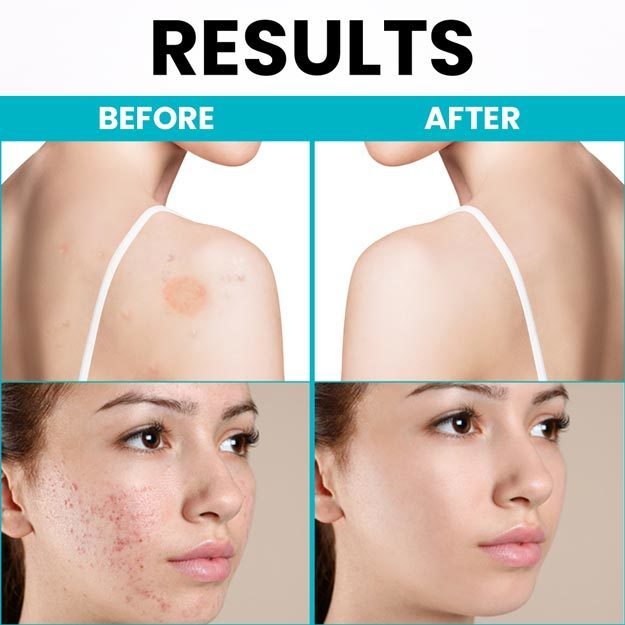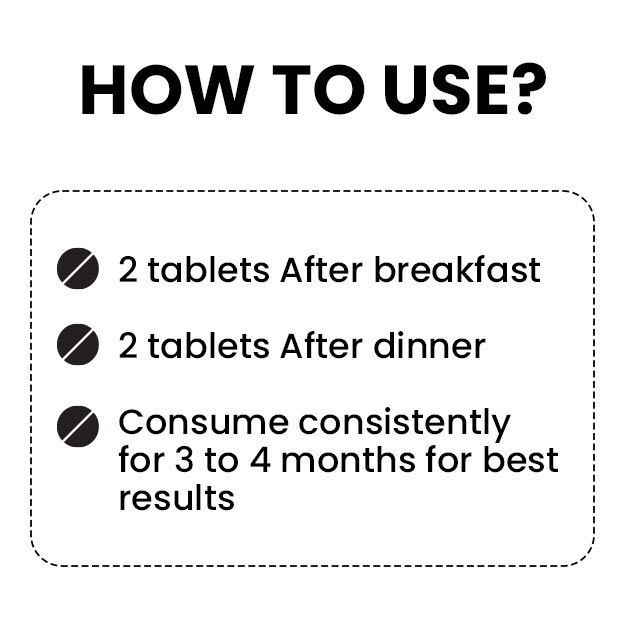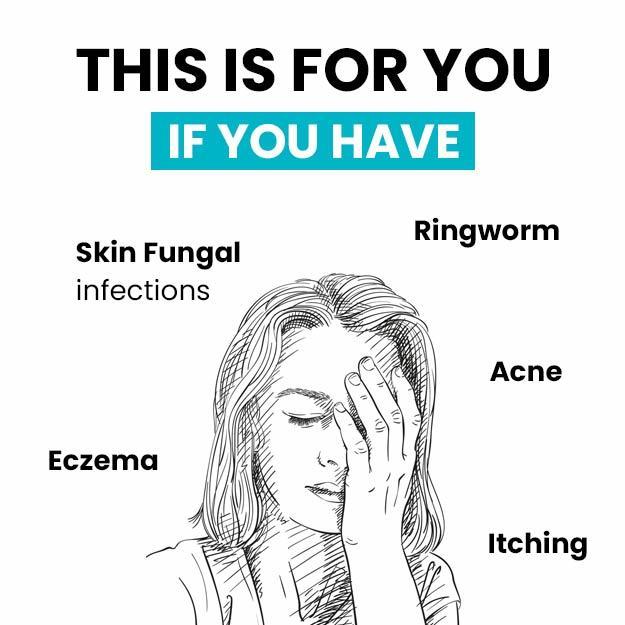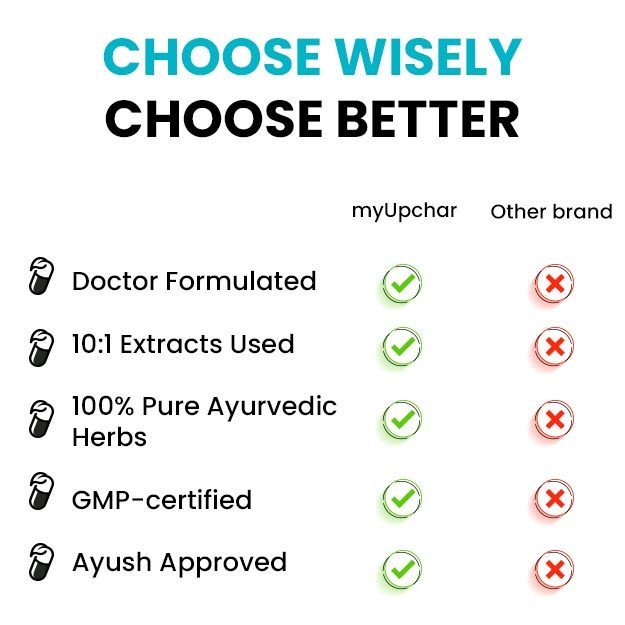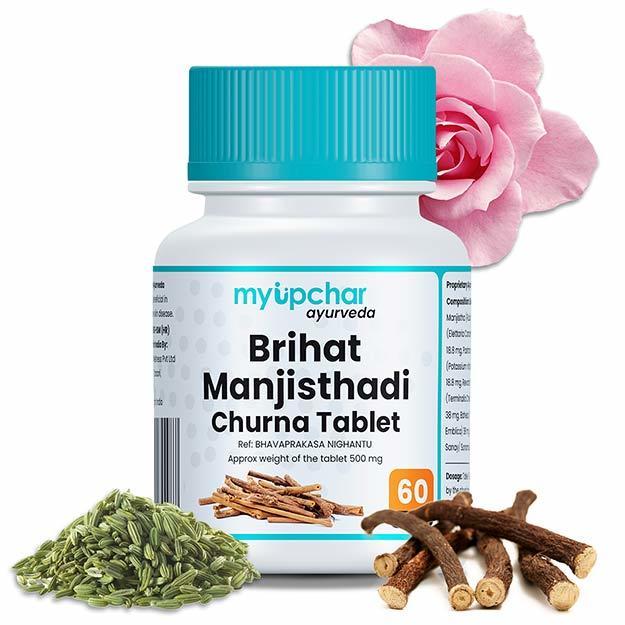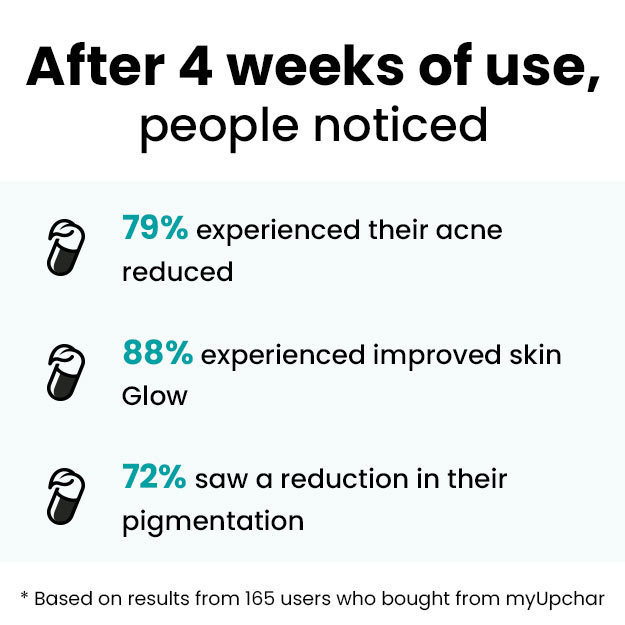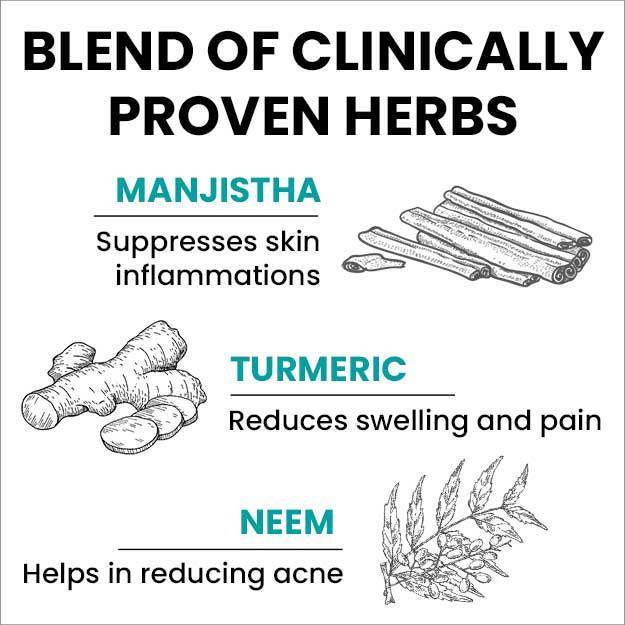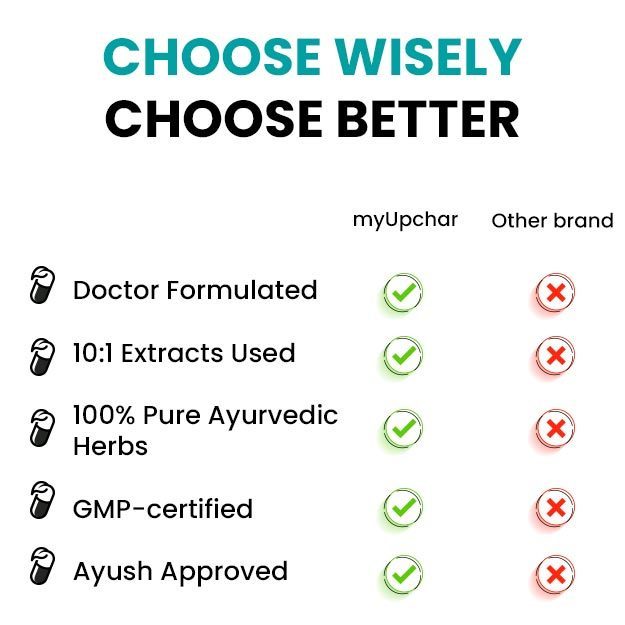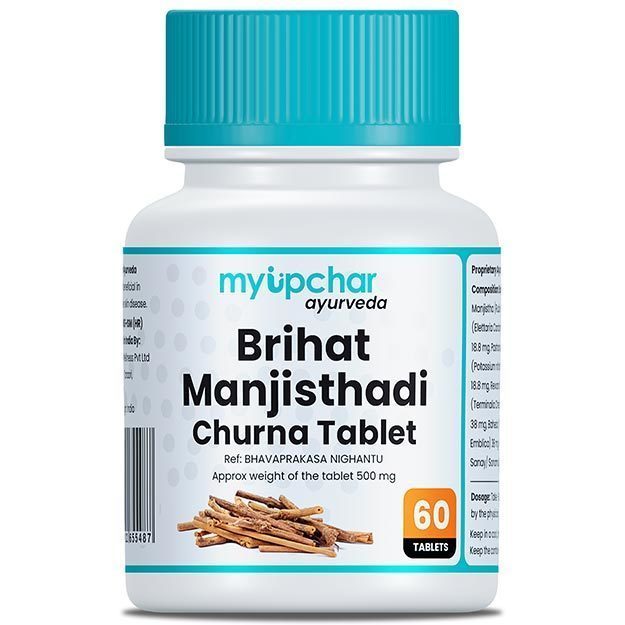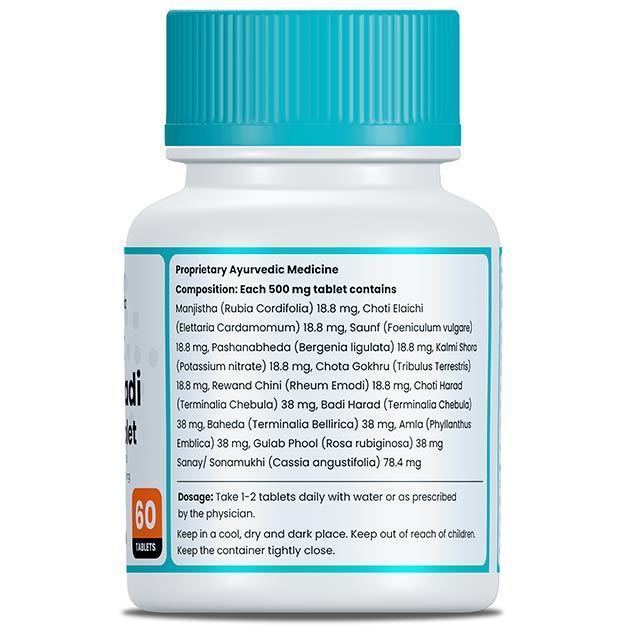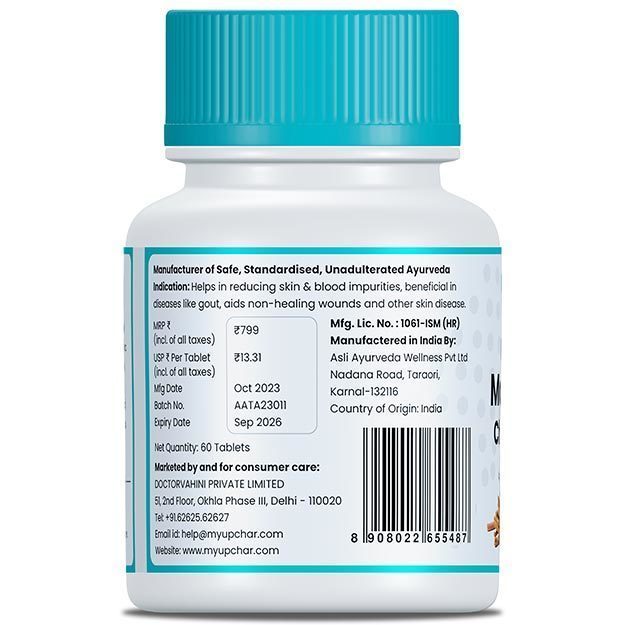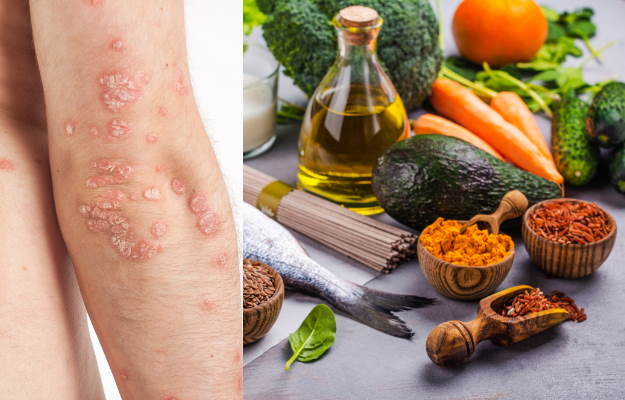Skin is an organ that encompasses the entire body and is helpful in perception as it can sense air and touch. As per Ayurveda, skin is a by-product of rakta dhatu, and skin disorders are termed as kushtha. Vitiation in the tridoshas (three doshas) or dhatus, eating contradictory food and drink combinations, and sitting, eating or having physical or sexual contact with people who have a fever, swelling or other skin conditions are some of the main causes of skin diseases like psoriasis.
According to Ayurveda, psoriasis comes under the category kshudra kushtha (minor skin diseases), in which only one of the three doshas is involved. Guduchi (giloy) is effective in treating both kitibha and ekakushtha (types of psoriasis). Arogyavardhini vati and khadirarishta are the two medications of Ayurveda that are beneficial in healing psoriasis. Making dietary changes to pacify the doshas, avoiding incompatible food combinations, not suppressing natural urges, and making lifestyle changes like avoiding excessive exercise and getting rid of stress helps achieve speedy recovery from psoriasis.
- Ayurvedic view of psoriasis
- Ayurvedic treatment for psoriasis
- Ayurvedic herbs and medicines for psoriasis
- Dietary and lifestyle changes for psoriasis as per ayurveda
- How effective are ayurvedic medicines and treatments for psoriasis
- Side effects and risks of ayurvedic medicine and treatments for psoriasis
- Takeaway
Ayurvedic view of psoriasis
According to Ayurveda, psoriasis is of two types:
- Kitibha: Psoriasis caused due to vitiation in the kapha and pitta doshas is called kitibha.
- Eekakushtha: Psoriasis caused due to vitiation in the kapha and vata doshas is called ekakushtha.
Symptoms associated with kitibha include blackish-/reddish-coloured itchy skin patches along with silver scales. The patches become slimy or rough and sometimes have exudates. These skin patches keep forming repeatedly. Suppressing the urge to vomit, consuming unwholesome and savoury foods in excess and eating incompatible food combinations such as fish with milk/milk products are some of the causes of kitibha.
Symptoms associated with ekakushtha include silver-coloured fish-like scales.
Psychogenic fever and improper eating habits act as contributing factors to ekakushtha.
Ayurvedic treatment for psoriasis
Ayurvedic treatment procedures used for psoriasis:
- Nidana parivarjana
Nidana parivarjana means avoiding the factors that cause disease. It is the first line of treatment for any disease. Nidana parivarjana has dual benefits - prevents relapse of the disease in future, and halts the progression of disease. Different methods like alpashana (eating a limited quantity of food), anashana (fasting) and pramitashana (little diet), langhana (fasting), and ruksha annapana sevana (eating foods that are dry) are used in this procedure based on the causes of the disease.
Ayurvedic treatment procedures for kitibha:
- Snehana (oleation therapy)
Liquids like oils are used in the snehana process. Oiling the body creates fluidity, moistness, and softness in the body. Snehana therapy lasts for about three to seven days. The massage done during this procedure is gentle and firm, and the oils used for massaging are usually warm. Along with massaging the body with oil, snehapana (consuming oil or ghee) is usually recommended. Karanja (Indian beech) and tuvaraka (chaulmoogra) oils are recommended for the snehana process for treating kitibha.
- Shodhana chikitsa (purification therapy)
Shodhana chikitsa for ekakushtha includes the procedures of vamana (medical emesis), virechana (purgation) and raktamokshana (blood-letting).- Vamana
Inducing vomiting therapeutically, or vamana, is one the five panchakarmas (five treatments) that is done to clean the stomach and eliminate mucus and ama (toxins) from the channels of the chest. This process is useful in treating many diseases like fever, pulmonary tuberculosis and diarrhoea. This cleansing procedure is also useful in treating skin conditions like eczema, leucoderma and psoriasis. It helps heal acute fevers, nasal discharge and fevers due to vitiated kapha as well. Vamana procedure is not recommended in people with haemorrhoids, chest pain, fatigue and a strong digestive fire. It is not advisable for people with blindness, weakness and a distended abdomen. Herbs used in vamana are of two types:- Vamaka herbs: This includes sharp, penetrating and hot herbs like salt water and liquorice
- Vamanopaga herbs: These herbs help improve the action of vamaka. Neem, amalaki (Indian gooseberry) and pippali (long pepper are some common vamanopaga herbs used for the treatment of psoriasis.
- Virechana
Virechana is purgation (cleansing) technique that shows noticeable effects pretty quickly. This method helps eliminate excess pitta levels from the body and facilitate the treatment of many skin disorders like skin patches, smallpox and discolouration on the face. It also helps heal blindness, poisoning, colon pain and vomiting. Bitter purgatives like aloe, senna and rhubarb are commonly used to induce purgation in the virechana process. Honey, boiled milk and ghee are used to induce mild virechana. This process is not recommended in people with poor digestion, ulcers, diarrhoea and recent fever. - Raktamokshana
Raktamokshana or blood-letting is a therapeutic method used to draw toxins out of the blood. This process is used in treating many conditions caused due to vitiated pitta and rakta such as headache, liver and skin diseases, high blood pressure and gout. This process is not recommended in women when they are pregnant or menstruating. It is also not used for babies, and individuals with cirrhosis, anaemia, leukaemia or oedema.
- Vamana
- Shamana chikitsa (pacification therapy)
Shamana chikitsa for ekakushtha includes the procedures of pachana (improving digestion), raktashodhana (cleansing the blood) and external applications of medicines.- Pachana
Pachana is a method where digestives are provided to a person to improve their digestion process and improve the health of their stomach and intestines. Herbs like cumin, turmeric, coriander and rock salt are used as digestives for pachana karma. - Raktashodhana
Shodhana therapy aims to detoxify the body and bring about a balance in the vitiated doshas. The raktashodhana method, as the name suggests, is used to detoxify blood in body. The therapy is either used as a mainline treatment of a disease or is performed as a pre-treatment procedure. Shodhana therapies are not recommended in people who are severely ill and who do not have tolerance for purgation or therapeutic vomiting. Some of the methods used in raktashodhana procedure are basti (enema), virechana and snehana. These therapies have proved to be successful in treating cancer, and conditions of liver and urinary system. - External applications
Ayurvedic doctors recommend applying taila (pure or medicated oils), lepa (a paste made out of herbs) and dhara chikitsa (pouring medicated liquids or oils on the body) externally to treat psoriasis. These procedures bring moistness and softness to the skin and thus provide relief from the scaly skin seen in psoriasis.
- Pachana
Ayurvedic herbs and medicines for psoriasis
Ayurvedic Herbs for Psoriasis
The following herbs are used to treat kitibha.
- Guduchi
Guduchi is known to provide immunomodulatory effects (improves immunity) in all the three doshas. It is a blood-purifying agent, which acts on the circulatory and digestive systems and helps in achieving recovery from various skin diseases. Guduchi is available in the form of powder and extracts. The churna (powder) form of this herb can be taken thrice a day for two weeks or as directed by your physician. Guduchi churna should be taken with lukewarm water or honey after meals. Guduchi is useful in treating kitibha as well as ekakushtha.
The following herbs are used to treat ekakushtha.
- Sariva (black creeper)
Sariva is known to be a diuretic, diaphoretic (induces sweating) and an alternative tonic in Ayurveda. It mainly shows effects on the nervous and circulatory systems of the body. Roots and stalks of this plant are used in the form of decoction to treat syphilis, elephantiasis and skin diseases. The churna form of sariva can be taken thrice a day after meals for about two to three weeks or as per your physician's direction. The churna should be taken with lukewarm water or honey.
- Haridra (turmeric)
Haridra is known to have anti-bacterial, stimulant and aromatic properties. It mainly acts on the digestive, respiratory and urinary system. Haridra is useful in treating many diseases including jaundice, diabetes, oedema, anaemia, and skin disorders. It is a natural antibiotic; thus, it is helpful in treating bruises and wounds. Haridra can be used as an infusion, milk decoction, or can be externally applied as a paste. The churna form of haridra can be taken thrice a day after meals for two to three weeks or as directed by your physician. Haridra churna should be taken along with lukewarm water or honey.
- Manjishtha (Indian madder)
Manjishtha is known to be one of the best blood-purifying herbs in Ayurveda. It helps enhance blood circulation, treats amenorrhea, controls bleeding and regulates the function of different organs like the kidneys and liver. It helps to heal many diseases and improve the skin complexion Manjishtha also helps in the quick healing of injuries and scars. Manjishtha can be consumed as a decoction or can be applied as a paste. The churna form of manjishtha can be taken thrice a day after meals for two to three weeks or as directed by your physician. The churna can be taken along with lukewarm water or honey.
Ayurvedic Medicines for Psoriasis
The following medicines are used to treat kitibha.
- Arogyavardhini vati
Arogyavardhini vati helps improve the overall health of the body. It is recommended to correct the balance of doshas. Arogyavardhini vati consists of loha bhasma (ash obtained from iron), shuddha parada (purified mercury), triphala (a combination of amalaki, vibhitaki and haritaki (Indian gooseberry, belleric myrobalan and chebulic myrobalan), pura (gum resin), tamra bhasma (ash obtained from copper), shilajatu (mineral pitch) and other herbs. This medicine has been used in Ayurveda for the treatment of all types of skin diseases. It also helps improve appetite and digestion and provides relief from irregular bowel movements.
myUpchar Shilajit from Ayurveda may aid in the management of psoriasis symptoms. Its natural properties support skin health. Order Shilajit Capsules and Shilajit Resin Now.
- Khadirarishta
Khadirarishta is a medicine with krimighna (worm-destroying) properties. It mainly acts on the blood and intestine function. Khadirarishta helps heal lesions formed in the intestines and shows anti-microbial activity, especially against microbes that cause skin diseases. It is effective in treating many skin diseases including kitibha. It also helps balance out dhatus in the body by increasing their resistance. Khadirarishta helps draw out ama (toxins) that are formed in the intestine and heart.
The following medicines are used for the treatment of ekakushtha.
- Manjishthadi kwatha
The root of the manjishtha plant is used to treat skin disorders. It is found to be useful in psoriasis, various fungal infections as well as scabies. It is used in the form of kwatha (decoction) as well as a poultice to treat diseases. Kwatha provides astringency and acts as a blood purifier and tonic for the body. A kwatha made with manjishtha and other herbs is useful in treating ekakushtha. Manjishthadi kwatha can be taken twice a day after meals for two to three weeks or as directed by your physician.
- Kaishora guggulu
Kaishora guggulu is useful in treating skin diseases and healing wounds. It is also useful in treating oedema and acne scars. It primarily acts by preventing pitta related changes in the body. This formulation is available in the form of a vati (tablet) which can be taken twice a day with lukewarm water before meals for about two to three weeks or as directed by your physician.
As treatments vary according to numerous factors such as an individual’s prakriti and the affected doshas, consult a qualified Ayurveda doctor for appropriate medications and treatment for your specific complaints.
Dietary and lifestyle changes for psoriasis as per ayurveda
Do’s
- Include barley, wheat, snake gourd, green gram, neem, nutmeg, garlic, bitter gourd, turmeric, pomegranate, dry ginger, honey, long pepper, clarified butter and cucumber in your diet.
- Include bitter tasting foods.
- Take baths and get regular massages.
- Do light exercises.
- Apply mahamarichadi taila on the affected areas of your skin.
Don’ts
- Do not follow irregular eating habits.
- Do not consume newly harvested cereal grains.
- Do not eat foods like new cereals, jaggery, and radish.
- Do not eat incompatible food combinations like fish with milk or milk products.
- Do not do heavy exercises and take stress.
- Do not suppress the natural urges.
- Do not eat foods that are heavy, obstruct your body channels and cause a burning sensation, for example, sesame, sour foods and milk.
- Do not consume salty foods in excess.
- Exclude fish, curd and salt from your diet.
How effective are ayurvedic medicines and treatments for psoriasis
A study concluded that vamana and virechana, the procedures of panchakarma that draw out toxins from the body, are an effective treatment for psoriasis.
Case studies indicate that a combination of kaishora guggulu, khadirarishta, arogyavardhini vati and manjishthadi kwatha was found to be effective in healing and managing erythroderma (a condition that occurs due to unstable plaque psoriasis) and psoriasis.
Side effects and risks of ayurvedic medicine and treatments for psoriasis
The use of haridra should be avoided in people with hepatitis or jaundice and in pregnant women with excess pitta.
The use of manjishtha should be avoided in people who have severe chills as the plant increases the vata dosha in the body.
As arogyavardhini vati contains heavy metals like mercury, excess doses can cause poisoning. This formulation should strictly be avoided in children and lactating and pregnant women.
Takeaway
As per Ayurveda, psoriasis is of two types, kitibha and ekakushtha. Ayurvedic herbs and medicines used to treat both the types of psoriasis provide least or no side effects and are effective in relieving the symptoms of psoriasis. Having appropriate dietary habits along with an active lifestyle can help manage the disease better.
Find Ayurvedic Doctor in cities
Doctors for Ayurvedic medicine, treatment and remedies for Psoriasis

Dr. Ayush Bansal
Ayurveda
2 Years of Experience

Dr. Megha Sugandh
Ayurveda
6 Years of Experience

Dr. Nadeem
Ayurveda
3 Years of Experience

Dr.Ashok Pipaliya
Ayurveda
12 Years of Experience
References
- Ministry of Ayush. [Internet]. Government of India. Central Council for Research in Ayurvedic Sciences.
- Ministry of Ayush. [Internet]. Government of India. Ayurvedic Standard Treatment Guidelines.
- Deepthi Viswaroopan et al / Int. J. Res. Ayurveda Pharm. 8 (Suppl 2), 2017.
- Swami Sadashiva Tirtha. The Ayurveda Encyclopedia. Sat Yuga Press, 2007. 657 pages.
- Lakshmi C. Mishra. Scientific Basis for Ayurvedic Therapies. C.R.C Press.
- Santosh Pal. et al. Arogyavardhini Vati: A theoritical analysis. Journal of Scientific and Innovative Research 2016; 5(6): 225-227.
- Vaidya Panchnan Gangadhar Shashtri Gune. Ayurveda aushadigunadharmashastra. Chaukhamba Sanskrit Pratishthan.
- Pragya. Rubia cordifolia Linn.. Himalyan Voices. [Internet].
- Bishwajyoti. Ayurvedic management of adverse drug reactions with Shvitrahara Varti. An International Quarterly Journal of Research in Ayurveda, 2013; [Internet].
- Anju P. Ramachandran. et al. A comparative study of Kaishora Guggulu and Amrita Guggulu in the management of Utthana Vatarakta. Ayu. 2010 Oct-Dec; 31(4): 410–416. PMID: 22048531.
- Gandhidas Sonajirao Lavekar. Classical ayurvedic prescriptions for common diseases. Ministry of Health, Govt. of India.
- Singh SK, Rajoria K. Ayurvedic management of life-threatening skin emergency erythroderma: A case study.. Ayu. 2015 Jan-Mar;36(1):69-72. PMID: 26730142
- Dharmesh J. Patel. et al. Effective Ayurvedic Treatment on Psoriatic Erythroderma (Eka Kushtha): A Case Study. International Ayurvedic Medical Journal. ISSN:2320 5091.

